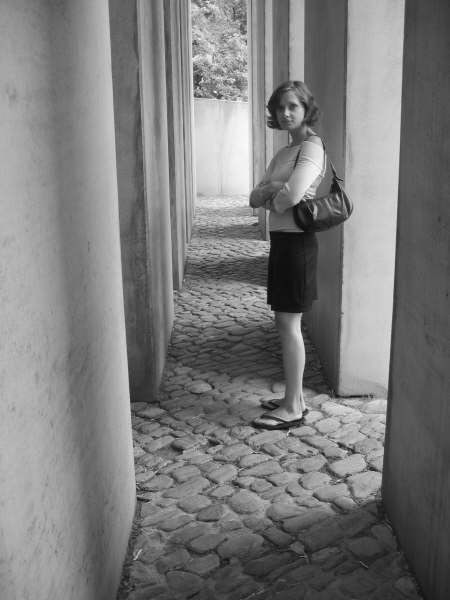 Three good friends and I just got back from a 4-day road trip to Quebec City. Though we spent most of our time in Vieux Quebec, on Saturday we ventured as far as Battlefields National Park - better known as the Plains of Abraham. It was a damp, chilly afternoon, and we didn't linger very long on the windy Plains before going to get a big bowl of chocolat chaud. We did, however, see a good number of monuments while in the park. Of those we saw, the plaque pictured above is my favourite.
Three good friends and I just got back from a 4-day road trip to Quebec City. Though we spent most of our time in Vieux Quebec, on Saturday we ventured as far as Battlefields National Park - better known as the Plains of Abraham. It was a damp, chilly afternoon, and we didn't linger very long on the windy Plains before going to get a big bowl of chocolat chaud. We did, however, see a good number of monuments while in the park. Of those we saw, the plaque pictured above is my favourite.Three things about this plaque caught my attention. First, of course, was its outrageously old-fashioned-sounding text. With the issues that Litt, Wood and McKay raise on the topic of commemoration still fresh on my mind, I thought that it would be great to have a short informational plaque beside this one to state who put up the plaque, when they did so, and if, or, more likely, how it had been defaced in its lifetime.
Second, I realized, the plaque tells its colourful story first in English, followed by a French translation. We saw other plaques in the park that marked the position different divisions had taken on the day of the battle. They were of the same standard shape and size as this little one of Wolfe's. I wish I could remember now if any of the other such plaques featured their English text first, or if that primacy is reserved for ol' Wolfe, alone.
Third, this plaque's bombastic story seemed completely incongruous to the physicality of the monument itself. The plaque is embedded into a slab that is about the size of a modest gravestone.
As anyone who has been to the Plains will know, a tall column marks the spot where Wolfe died. The column is a short walk away from the small plaque. Four bronze plaques cover the four faces of the column's base. One reads, simply, (in French, followed by an English translation), "ICI MOURUT WOLFE LE TREIZE SEPTEMBRE 1759". There's really nothing noteworthy about that inscription. The other three plaques are, however, much more intriguing, as they relate the column's biography. They state that five successive Wolfe memorials occupied the spot. The first, they teach, was nothing more than a stone rolled to the spot after the battle in 1759. The British Army in Canada built a memorial in 1832. It was subsequently "destroyed" (how? why?), thereby forcing the Army to build another one in 1849. In 1913 the National Battlefields Commission built the 4th installment which "reproduced" the column of the previous incarnation. Finally, the Commission erected the 5th memorial in July 1963 "in replacement of the column which was destroyed on March 29th 1963."
What a story! It's too bad the column doesn't tell its visitor why the darn thing was destroyed so many times. Or, on second thought, is there value in sparking the visitor's curiosity so that she might try to uncover explanations on her own?
I really appreciated Kevin Marshall's comment on my last post that history is "messy", and that it "spills away from a historic site in a way that plaques can't possibly illustrate." Thanks, Kevin! I like that description. I do wonder, though: Might Wolfe's column - as much a memorial to itself as a memorial to the General - be a successful complement to the unabashedly old-fashioned Wolfe plaque that my friends and I encountered first? Might the odd combination of those two markers urge anyone intrigued by what their texts avoid stating outright to learn about, say, what was going on in Quebec City in '63?

No comments:
Post a Comment